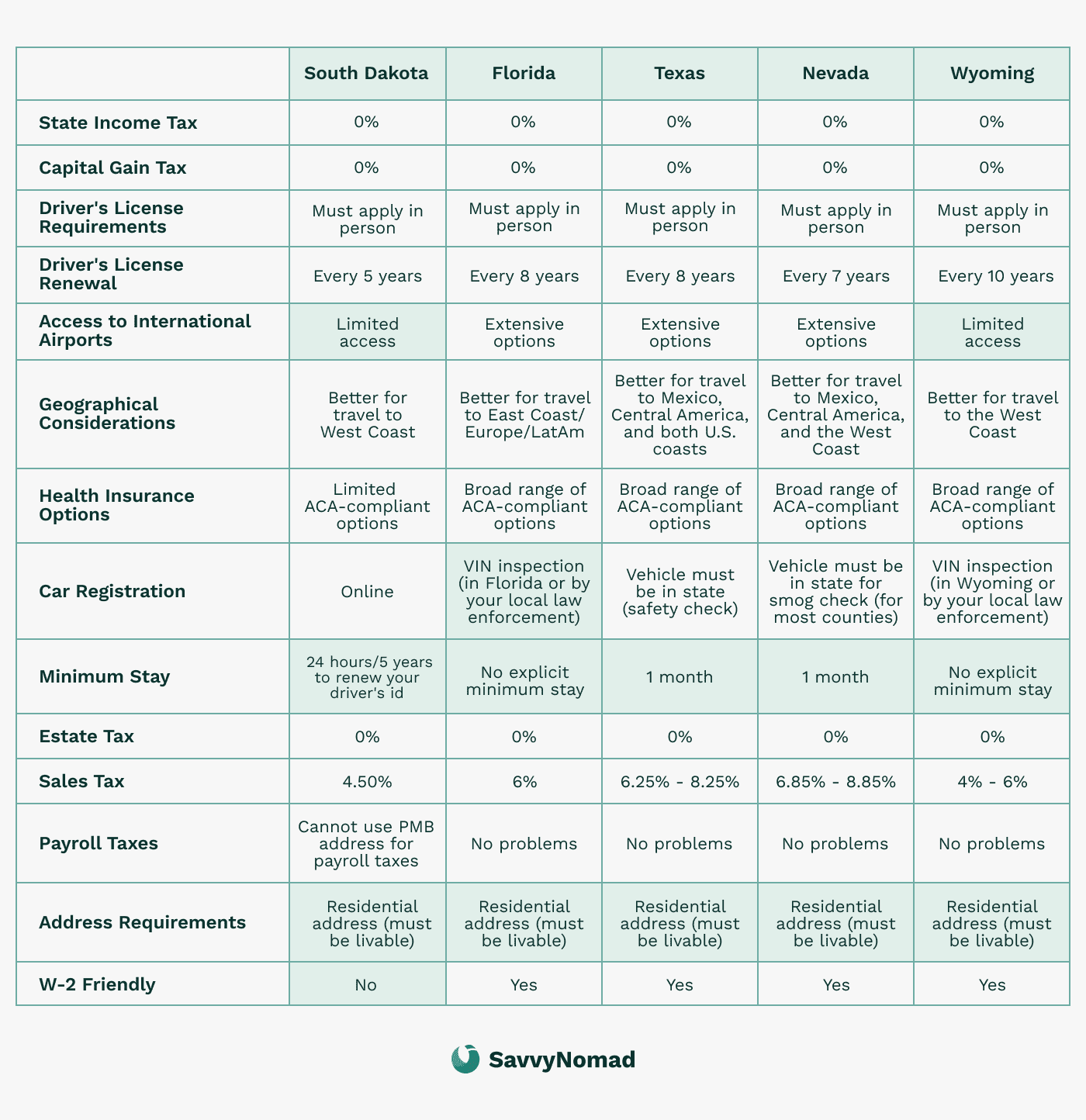How to leave Hawaii residency?

For American digital nomads, expats, and even local residents, the decision to leave Hawaii is becoming more common due to several financial and lifestyle challenges. Hawaii’s high state income tax, which can go up to 11%, is one of the highest in the country, making it difficult to maximize earnings.
Additionally, the state taxes residents on their global income, offering no exclusions—a significant burden for those with income streams from abroad. This worldwide taxation makes residency particularly taxing for digital nomads and remote workers who generate income from multiple sources.
Beyond the tax implications, Hawaii’s high cost of living, especially the housing market, continues to push people away. Many locals struggle with the ever-increasing cost of housing, compounded by restrictive land-use regulations that limit new construction, further driving up prices.
For those seeking to build a financially sustainable life, affordable housing and living costs on the mainland or in other states become more appealing. Career opportunities outside Hawaii also play a significant role in migration, with many leaving the islands to pursue better job prospects on the mainland.
Steps to leaving Hawaii residency
Step 1: Establish a new domicile
When leaving Hawaii residency, the first step is to establish residency in another state. This involves not only moving physically but also taking legal steps to prove that you intend to make the new state your permanent home.
Here’s how to establish a new domicile successfully:
1) Establish new residency
- Secure a residential address: Rent or buy property in your new state. If you purchase a home, look into potential tax benefits like Florida’s homestead exemption, which can provide property tax relief. Other states such as Texas, Nevada, and South Dakota may offer favorable tax conditions and can be attractive options for individuals looking to reduce their overall state tax burden, depending on their situation.
- File a Declaration of Domicile: In states like Florida, you can file a Declaration of Domicile, which legally states your intent to make the new state your permanent home. This additional legal documentation can further solidify your residency status.
A bona fide residential U.S. address can help some banks and brokers complete CIP/KYC and can support your domicile filings, but acceptance varies by institution.
Any potential tax advantages depend on your overall situation; banks and state agencies make their own decisions, and prior-state rules may still apply.
Residency guides:

2) Relocate your belongings
Physically move your personal belongings to your new state of residence. Moving essential items like furniture and vehicles is a clear signal of your intention to make the new state your permanent home.
3) Spend time in your new state
The more time you spend in your new state, the better. While it’s common for nomads to briefly visit to establish legal residency, the more you integrate into your new location, the easier it is to prove that Hawaii is no longer your home.
Hawaii’s tax authorities may closely scrutinize how much time you spend outside the state, so spending as much time as possible in your new home is beneficial.
4) Transfer IDs and vehicle registrations
Transfer your driver’s license and vehicle registration to your new state. This is one of the clearest indicators of your intention to make the new state your permanent home.
5) Register to vote in your new state (if eligible)
If you are eligible, you may register to vote in your new state. Voter registration is a supporting indicator of domicile—not determinative on its own—and having registration in your new state can help show that your civic ties have shifted away from Hawaii. For questions about eligibility and the registration process, consult election officials in your new state.
6) Update financial accounts
Make sure to update your address with all financial institutions, including banks, credit card companies, and investment accounts. This helps reflect your new residency status and cuts financial ties to Hawaii.
7) Notify your employer
Notify your employer of your change in address and residency. Make sure that your payroll and tax withholdings reflect your new state, ensuring that Hawaii is no longer receiving tax withholdings from your income.

Step 2: Sever ties with Hawaii
To further establish that you have left Hawaii residency, it’s crucial to sever all significant ties with the state. This will demonstrate to Hawaii’s tax authorities that you no longer maintain residency there.
1) Close Hawaii financial ties
- Close Hawaii bank accounts: Closing local bank accounts and transferring your funds to your new state helps demonstrate that your financial activity is no longer tied to Hawaii.
- Update personal records: Ensure that all personal records (with the IRS, Social Security, etc.) reflect your new address and state of residency.
2) Sell or lease property
- Sell or lease your Hawaii property: If you own property in Hawaii, selling or leasing it is a key step in demonstrating that you no longer intend to reside in the state. If you lease, ensure it is a long-term arrangement, as frequent use of the property could suggest continued residency.
- Move personal belongings: Relocating your personal belongings to your new state is another step in demonstrating that your move is permanent.
3) Cancel local subscriptions/services
Cancel any Hawaii-based memberships, subscriptions, or services, such as gym memberships or utilities. This further removes ties to the state and signals your intent to leave permanently.
4) Transfer healthcare and insurance
Find new healthcare providers in your new state and update your health insurance to reflect this change. This is a significant step in showing that your day-to-day life is based in your new domicile.

Step 3: Time spent outside Hawaii
One of the important factors in leaving Hawaii residency is the amount of time you spend in the state. Many states use a 183-day benchmark, but Hawaii has its own day-count rule.
183-Day Rule
- Keep detailed travel records: Retain flight tickets, hotel receipts, and other travel records to prove the time spent outside Hawaii. These records can be important if Hawaii tax authorities ever review your residency status.
- Manage your days: To reduce the risk of being treated as a Hawaii resident under this rule, aim to keep your days in Hawaii under that threshold and maintain clear evidence of your new domicile. Day count is only one factor; domicile and other ties still matter.
- Understand Hawaii’s threshold: Hawaii generally treats you as a resident if you are domiciled in the state or if you spend more than 200 days in Hawaii during the tax year, unless you can show that your stay is temporary and that you are domiciled elsewhere.
Step 4: Hawaii-sourced income
Even after you leave Hawaii residency, you may still have tax obligations if you continue to earn income from sources in the state. It’s important to understand how Hawaii-sourced income will be taxed.
1) Ongoing tax responsibilities
File non-resident tax returns: If you continue to earn income from Hawaii (such as rental income or business income), you will need to file non-resident tax returns. This allows you to report income earned from Hawaii sources while avoiding the global taxation that comes with residency.
2) Rental or business income
Taxation of Hawaii-sourced income: If you own rental properties or businesses in Hawaii, income from these sources will still be subject to Hawaii taxes. Make sure you understand the tax implications of continuing to earn income from Hawaii, even as a non-resident.
By taking these steps, you’ll not only establish a new domicile but also substantially sever ties with Hawaii. This can help demonstrate that you are no longer a Hawaii resident for tax purposes and position you to benefit from your new state’s rules, but actual residency determinations ultimately depend on state law and your specific facts; banks and state agencies make their own decisions, and prior-state rules may still apply.





